Why We Say Salida (suh-LIE-duh)
When the Denver & Rio Grande Railroad founded this little town they called it South Arkansas. That was in 1880, but the post office ordered a name change in 1881. On a suggestion from the Governor of Colorado, Alexander C. Hunt, who was also an official of the railroad and had recently visited Mexico, he thought the Spanish word for “exit” would be appropriate, referring to the place where the Arkansas Valley opens up from the canyon to the East. Because there was a lot of intermixing of languages here in Colorado, there have been many transitions in both spellings and pronunciations of place names like Salida. As far back as the early days of this railroad town, many people voiced their concern. Just like my old friend Kim Maurice Swift said in the Salida Daily Mail, August 4, 1884, “This do settle it. The word Salida is pronounced ‘Sa-lee-da’, accented on the second syllable and the ‘i’ having the sound of ‘e’, Salida being a Spanish word meaning ‘Gate-way’. Let us pronounce the name of our town properly, even though it does at first sound a little dullish.” Well, Mr. Swift’s own understanding of the word in Spanish was a bit wrong, since the word “salida” means “exit.” In spite of his campaign, though, the way we say the town’s name did not change, and if someone comes to town and pronounces it correctly he would be considered a “dude.”
The same situation applies to our neighbor to the north, Buena Vista. Instead of saying the words in Spanish properly, “Bwayna Veesta,” people say “Byoona Vista,” or they just say “Bue-nie.” And when folks visit the city of Pueblo to the east, locals usually say “Pee-eb-lo” instead “Pwe-blo.” I must admit I have trouble with that – makes me feel like a flat lander. Our friends to the south in the town of Saguache, which comes from the Ute word, Sa-gua-gua-chipa, or “water of the blue earth,” just say “Sah-watch.”
The Smokestack
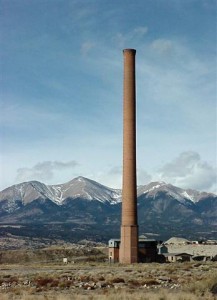
This local landmark is just a few miles northwest of Salida in what is now called Smeltertown. The Ohio and Colorado Smelting and Refining Company built the 365 ft. structure in 1917, but it was used for only about 30 months (last used in March of 1920). The base is concrete set on bedrock and is 40 feet wide, using standard gauge railroad rails set on the end and criss-crosed horizontally 30 feet deep. The Stack cost about $50,000 dollars in 1917 ($43,000 of that budget in brick). The company started as a 1,200 ton per day smelting-refining operation in February 1902. The 80 acres occupied by the OCS&R Company complex was land donated by Salida area residents or with money donated for that purpose. Salida’s City Clerk Bertie Roney became the first woman to visit the top of the smokestack on Nov. 14, 1917. She was hoisted up in a bucket. For more information click here.
Salida the State Capital
While Denver was always the center of the Territorial Government of Colorado, they didn’t have a lock on being the capital when Colorado was made a state in 1876. In fact, even after statehood the question was raised about where the capital should be located. Let me tell you, the fur began to fly! The new Coloradans were making plans on building the state capital in 1881 and the state legislature, under the constitution, was to designate the location. Back then Leadville was the second largest city in Colorado and more centrally located and more economically productive than any other city in the state. On November 8, 1881 the question was brought to the people and many towns threw their name in the ring for becoming the state capital. Among them, in addition to Denver and Leadville, were Pueblo, Colorado Springs, Cañon City, Salida, Golden, Gunnison, Greeley, and Hot Sulphur Springs. The winner by far was Denver with nearly two thirds of the votes, 30,248. Next was Pueblo with 6,047, then in third place was Colorado Springs with 4,700. Cañon City came in with 2,788 and Salida had 695 votes. The other towns had a total of 929 votes all together. If we would have worked a bit harder the capital might have been in the “Heart of the Rockies”. Oh, by the way, even though Leadville was prosperous and the second largest city, they could not convince the legislature to hold a second vote to see if they could influence enough votes to change the location. Gunnison was mad too, because that is where most of the granite for the capitol building came from!
Altitude Awareness
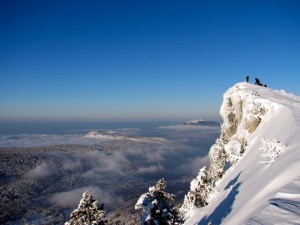
In Colorado’s high country, skies are bluer and stars are brighter because of our altitude. Our air is thinner, with less oxygen, than at sea level, and the effect is particularly noticeable above 8,000 feet. Until your body adjusts, go easy on physical activity; drink more water than usual; minimize your intake of alcohol, caffeine and salty foods; and eat high carbohydrate foods, such as grains, fruits and vegetables. There is less atmosphere to screen out ultraviolet rays, so remember to use sunscreen, sunglasses, and a hat with a brim for shade. If you adopt the proper attitude toward Colorado’s altitude you and your family will have the most enjoyable vacation experience possible.
The Angel of Shavano
The Angel of Shavano is on Mount Shavano, just west of Salida and rising 7,000 feet above the town with an altitude of 14,229 feet (4,337 meters). Named for the Ute Chief Shavano, it is one of the fourteeners here in Colorado and the 17th highest in the state (a near-neighbor to Tabeguache Peak). It lies just east of the Continental Divide and west of the Arkansas River. Mount Shavano is part of the Sawatch Range and lies in the south-central part, north of Mount Ouray and Mount Chipeta and south of the Collegiate Peaks (including Mount Princeton, Mount Harvard, and Mount Yale). Mount Shavano is famous for the Angel of Shavano, a snow formation in the image of an angel that emerges on the east face of the mountain during snow melt each spring.
As the story goes, a long time ago there was no water for the people that were living in the valley, and it had not rained all summer; soon the dry conditions would drive them from the land. The story also tells of an Indian Princess who loved her people and the valley very much and prayed for answer to the draught. She went to the foot of the mountain, now called Mount Shavano, to pray to the gods and weep for her people. One day her prayers were answered by the Indian God of Plenty. He beckoned to her and she sacrificed herself so that her people could live. Now every year the Princess – the Angel of Shavano – reappears and weeps once more for her people. Her tears, the melting snow, fall on the land below and make it fertile.
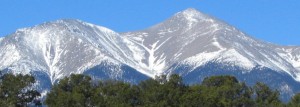
The Angel of Shavano appears in the late spring and can be seen much of the summer. Heading west on Highway 50 towards Monarch Pass, once you pass Salida, look to your right. The Angel appears with outstretched arms near the top of the second tallest peak. (See if you can find the Grinch of Shavano, to the right of the angel.)
Loyal Duke, Salida’s Greeter
One of my favorite stories about Salida is the one about a stray dog that adopted this town, the Monte Cristo Hotel and our railroad yard as his home. If you ever met a dog that was as smart as any person you met that would be ol’ Duke. Duke was a handsome water spaniel and came to the D&RGW railroad complex in Salida with a railroad worker. When the worker lost his life in an accident, Duke hung around the hotel called Monte Cristo. He soon became fast friends with the manager of the hotel and became their unofficial greeter. He would give his doggie greeting to travelers staying at the hotel and returning visitors would get a special “hello”. He also loved to ride the baggage carts from the depot to the hotel and got some attention as he rode high upon the stacks of luggage.
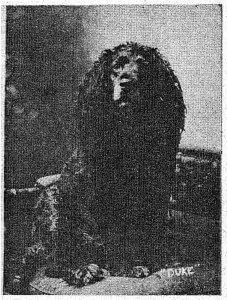
Loyal Duke, as he became known, was loved by all and became famous on the D&RGW line. Well, one day Duke got powerful sick and had to be taken to the hospital, yep a people hospital, they tried all the fancy doctoring stuff they could think of but in the end it was not enough and he passed away. All the people of Salida felt really bad and gave him a funeral fit for royalty and eulogy fit for heads of state. As a tribute to Duke and in his memory they buried him on Little Tenderfoot and erected a monument to him. That was way back in 1902 and now here we are almost 110 years later still remembering Duke and his impact on Salida and their visitors. Way to go Duke!
Pets and Altitude
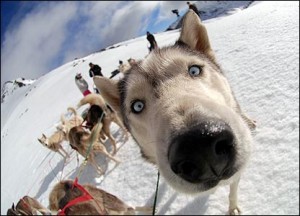
If your dog seems sluggish in the mountains, know that dogs do not automatically adjust to higher altitudes. Like humans, pets should be given time to get used to the thinner air. Give your dog lots of water and while hiking, be careful of overheating. If your dog lags behind or its tongue hangs out, your dog is overexerted. Let the dog rest. If hiking away from potable water, carry a water bottle for your dog. Note: Dogs can get the giardia parasite drinking from streams. Check with your vet for giardia shots. Also be sure to check your dogs paws. Hiking in the woods can cause cuts, scrapes and foot pad injuries. Carry an anesthetic and gauze or tape to bandage wounds.
Colorado’s Official Gemstone, Water of the Sea
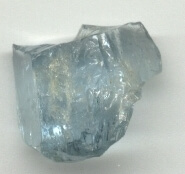
The official gemstone for Colorado is the aquamarine and it was named after the color of the ocean. In Latin it means “water of the sea.” The crystal is a blue or turquoise variety of beryl. Some of the finest examples are found in Russia. But you don’t have to go that far to find some very nice examples of aquamarine, because they can be found right here in Colorado and Chaffee County. Mighty pretty rock but not an easy one to find. In fact, in you were hunting it around the Upper Arkansas Valley area you would have to go way up high on Mount Antero, around 14,000 feet. Mount Antero is between Salida and Buena Vista in the Sawatch Mountian Range and is 14,269 ft. tall. It was named for the Unitah Ute Chief Antero – one of the chiefs who, in 1863, signed a treaty ceding rich mineral lands in the San Juan district to the United States. There are many examples of the pretty aquamarine gemstones in museums around the world. Also there has been examples of pure quartz crystals taken from the Mount Antero area, one was said to be about 5½” ’round and was at the Chicago’s World Columbian Exhibtion in 1893 and now on display at the Chicago Museum of Natural History. Legends say if a person wears pure crystals it would give them good health and good luck and ones used for crystal balls had special powers. “I see a visit to Salida in your future.”
Another place you can find aquamarines in the United States is in the Big Horn Mountains, near Powder River Pass, Wyoming. But the largest aquamarine, of gemstone quaility, ever mined was in Marambaia, Minas Gerais, Brazil, in 1910. It weighed over 242½ lbs. and was 19 inches long and 17 inches ’round.
Colorado
First, the name of our state, Colorado, has it’s origins in the Spanish language as the word for “colored red”. Congress chose this name for the newly formed Colorado Territory in 1861. Also, Colorado has been nicknamed the “Centennial State” because it became a state in 1876; which was 100 years after the signing of our nation’s Decloration of Independence. You’ll find that Colorado has many bustling cities, sprawling ranches, ancient ruins, great train rides, ghost towns, and giant sand dunes. Oh, and lots of mountains-big ones: more than 50 are higher than 14,000 feet! The state tree of Colorado is the blue spruce. The state bird is the lark bunting. The tallest mountain in Colorado is Mt. Elbert. The state capital of Colorado is Denver, also called the Mile High City because it is 5,280 feet above sea level. The state moto “Nil Sine Numine” is a Latin phrase that was adopted as part of the Territorial Seal, and means “Nothing without the Deity”. Early miners said it meant “Nothing without a new mine”. Can you tell me what the state flower is?

Also did you know that the Santa tracker is based in Colorado Springs? Every year, millions of people from around the world check the website of NORAD to follow the progress of Santa on Christmas eve. (NORAD’s Santa tracker is activiated at the beginning of December of each year)
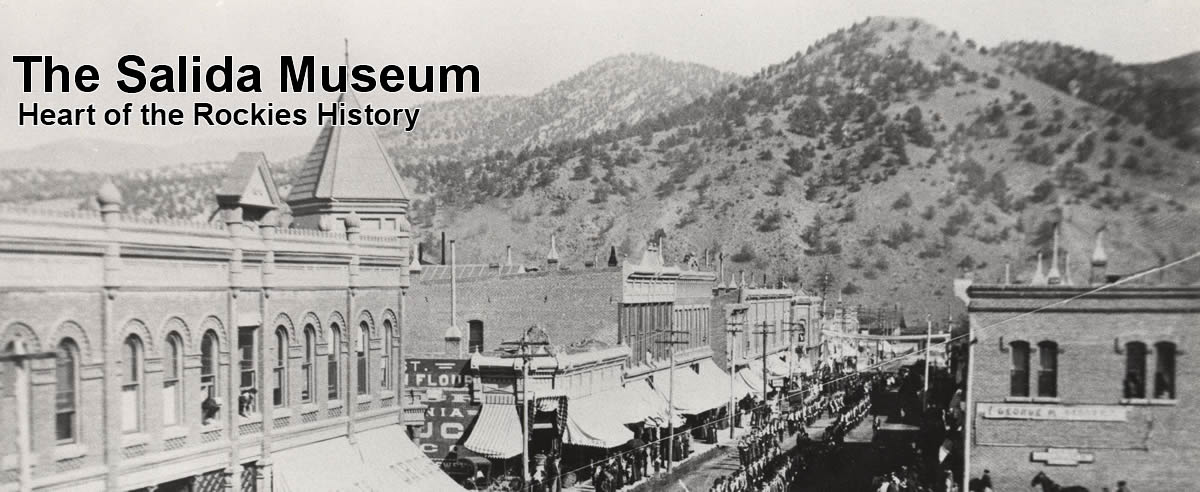
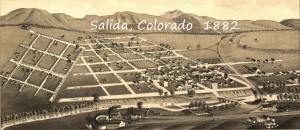
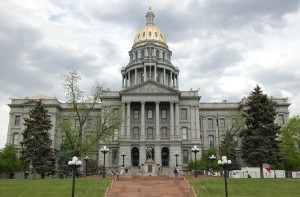
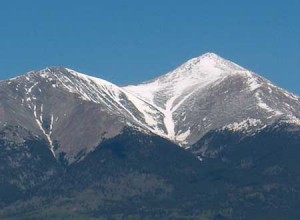
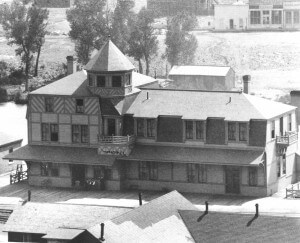
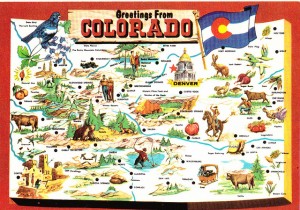
What a valuable resource you are!!!
I’m wondering if you can help me locate any photos of railroad workers from the early 1900’s, or any time, really. I am a local artist and I am working on a series involving the railroad.
Thank you!